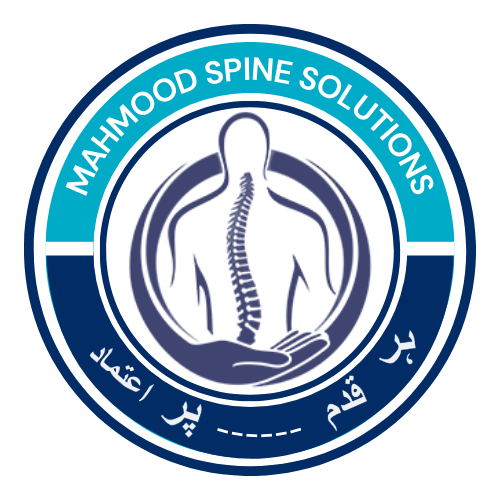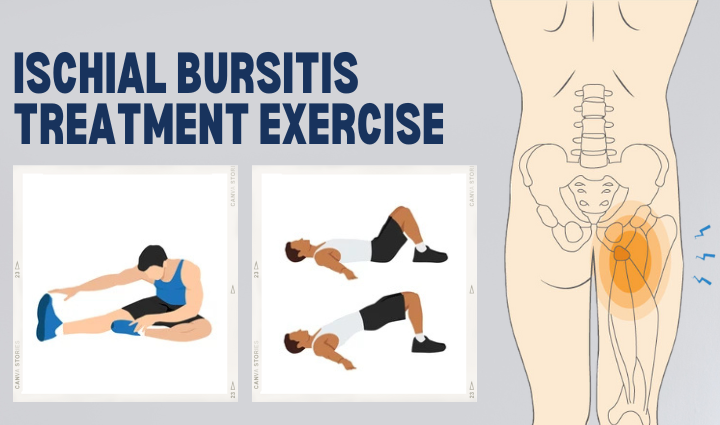Dealing with ischial bursitis can feel like a pain in the you guessed it bottom. This condition, often nicknamed “weaver’s bottom,” results from inflammation of the bursa located near the ischial tuberosity, the bony part of your pelvis that you sit on. Whether you’re an athlete, a desk worker, or someone in between, this persistent pain can make everyday activities uncomfortable.
Thankfully, there’s hope for relief, and much of it lies in targeted exercises. In this blog, we’ll explore the best ischial bursitis treatment exercises to reduce pain, improve mobility, and help you get back to doing what you love.
What is Ischial Bursitis?
Before diving into exercises, let’s understand what we’re dealing with. Bursae are small, fluid-filled sacs that cushion and reduce friction between bones, muscles, and tendons. When the bursa near your ischial tuberosity becomes irritated often from prolonged sitting, repetitive activities, or injury you may experience pain in the buttocks, especially when sitting or climbing stairs.
Why Are Exercises Important for Ischial Bursitis Treatment?
Rest is important in the early stages of ischial bursitis, but long-term recovery hinges on keeping the area strong and flexible. Ischial bursitis treatment exercises help by:
- Reducing inflammation through improved circulation.
- Strengthening surrounding muscles to support the area.
- Improving flexibility to reduce tension on the bursa.
- Preventing future flare-ups by promoting healthy movement patterns.
Best Ischial Bursitis Treatment Exercises
Here are some simple, effective exercises to add to your routine. Remember, if you experience sharp pain while doing any exercise, stop and consult your healthcare provider.
- Gentle Hamstring Stretch
Tight hamstrings can put extra pressure on the bursa, making the pain worse. A gentle stretch can help.
How to Do It:
- Sit on the floor with one leg extended and the other foot tucked into your inner thigh.
- Lean forward gently toward your extended leg, keeping your back straight.
- Hold for 20–30 seconds and switch legs.
Why It Helps:
This stretch relieves tension in the hamstrings, reducing strain on the ischial area.
- Glute Bridge
Strengthening the gluteal muscles helps support the pelvis and reduces the load on the inflamed bursa.
How to Do It:
- Lie on your back with your knees bent and feet flat on the floor.
- Engage your core and lift your hips toward the ceiling, forming a straight line from your knees to your shoulders.
- Hold for a few seconds, then lower slowly.
- Repeat 10–15 times.
Why It Helps:
This exercise targets the glutes and core, which are essential for stabilizing the pelvis.
- Piriformis Stretch
The piriformis muscle runs near the bursa, and stretching it can relieve tension and pain.
How to Do It:
- Sit on the floor with your legs extended.
- Cross one leg over the other so your foot rests near the opposite knee.
- Gently twist your torso toward the bent knee, placing your opposite elbow on the outside of the knee for support.
- Hold for 20–30 seconds and switch sides.
Why It Helps:
This stretch reduces pressure on the bursa by relaxing nearby muscles.
- Child’s Pose
This yoga-inspired pose is great for gently stretching the lower back, glutes, and hamstrings.
How to Do It:
- Kneel on the floor, sitting back on your heels.
- Stretch your arms forward as you lower your torso to the ground.
- Hold for 20–30 seconds, breathing deeply.
Why It Helps:
Child’s pose promotes relaxation while loosening tight muscles around the pelvis.
- Side-Lying Leg Lifts
Building strength in the hip abductors can improve pelvic stability and reduce stress on the bursa.
How to Do It:
- Lie on your side with your legs stacked.
- Keep your lower leg bent for support and lift your top leg straight up.
- Lower it slowly and repeat 10–15 times per side.
Why It Helps:
This exercise strengthens the glutes and hip stabilizers, key players in ischial bursitis recovery.
- Cat-Cow Stretch
This gentle spinal movement helps improve flexibility in the lower back and pelvis.
How to Do It:
- Start on your hands and knees in a tabletop position.
- Inhale as you arch your back (cow pose), lifting your head and tailbone.
- Exhale as you round your back (cat pose), tucking your chin and tailbone.
- Repeat 5–10 times.
Why It Helps:
Cat-cow promotes mobility in the spine and pelvis, reducing stiffness and discomfort.
Tips for Safe and Effective Exercise
To get the most out of these ischial bursitis treatment exercises, keep these tips in mind:
- Warm up before exercising to prepare your muscles.
- Listen to your body and avoid pushing through pain.
- Stay consistent with your routine to see long-term benefits.
- Combine exercise with other treatments like ice therapy, anti-inflammatory medications, or physical therapy if recommended by your doctor.
When to See a Professional
While exercises can be highly effective, some cases of ischial bursitis may require additional treatment. If your pain persists despite regular exercise, consider consulting a physical therapist or healthcare provider.
For expert care, you can reach out to Dr. Mahmood Ahmad at Razia Saeed Hospital. With extensive experience in treating musculoskeletal conditions, Dr. Mahmood Ahmad offers personalized treatment plans, including advanced options like cortisone injections or guided physical therapy.
Contact Information:
- Dr. Mahmood Ahmad
- Razia Saeed Hospital
17-E Near Eid Gah, Chowk, Officers Colony, Multan, Punjab - Phone: 0300 0777790
- Email: [email protected]
- Website: drmahmoodahmad.com
Seeking professional help can make a significant difference in managing ischial bursitis effectively. Don’t hesitate to reach out for expert guidance if your symptoms persist.
Lifestyle Changes to Support Recovery
In addition to ischial bursitis treatment exercises, small lifestyle adjustments can make a big difference:
- Switch to a cushioned seat or use a seat pad to reduce pressure while sitting.
- Take frequent breaks if you sit for long periods.
- Incorporate low-impact activities like swimming or walking into your routine.
- Focus on posture to avoid unnecessary strain on your lower back and pelvis.
The Road to Recovery
Dealing with ischial bursitis can be frustrating, but targeted exercises and mindful movement are powerful tools for healing. By incorporating these ischial bursitis treatment exercises into your daily routine, you can strengthen your body, relieve pain, and prevent future issues.
Stay patient and consistent. It’s all about making small, sustainable changes. And remember, it’s always okay to ask for professional guidance if you need extra support. Here’s to a pain-free, active life ahead!
Whether you’re stretching at home, hitting the gym, or working with a therapist, these exercises can make a real difference. If you have questions or success stories about your journey with ischial bursitis, drop a comment below. We’d love to hear from you!




